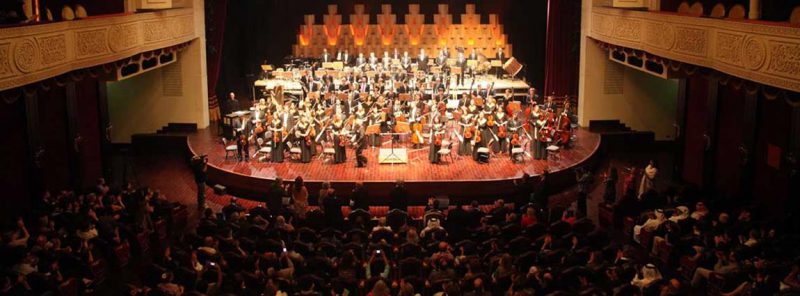Dmitrij Kitajenko returns for two concerts to the Qatar Philharmonic. Both concerts will take place at the Opera Ouse in Doha. The first one will feature music by Wagner, Shostakovich and Brahms, while the second concert will comprise compositions by Mozart, Grieg and Khachaturian.
The first concert is scheduled for Wednesday, 09 May. To open the program, Dmitrij Kitajenko, will conduct Richard Wagner’s Overture to Rienzi. It will be followed by Dmitri Shostakovich’s Symphony No. 9, Op. 70.
Shostakovich composed this symphony – his shortest symphony since the Second – for a middle-sized orchestra plus percussion in the summer of 1945, and Yevgeny Mravinsky led the first performance in November. Solomon Volkov recalled the composer’s saying, “They wanted a fanfare from me, an ode, a majestic Ninth….I doubt that Stalin ever questioned his own genius or greatness. But when the war against Hitler was won, he went off the deep end, like a frog puffing himself up to the size of an ox, and now I was supposed to write an apotheosis of Stalin. I simply could not….My stubbornness cost me dearly.”
Mravinsky called the new symphony “a joyous sigh of relief…a work directed against philistinism, which ridicules complacency and bombast, the desire to rest on one’s laurels.”
Then, German violinist Kolja Blacher will perform the Violin Concerto by Johannes Brahms. A born and bred Berliner – his father was the Baltic-German composer Boris Blacher, the 55-year-old violinist is known as a particularly inventive and sometimes non-conformist musician.
Dmitrij Kitajenko will conclude the concert witch a selection of Johannes Brahms’s Hungarian Dances.
The second concert will take place on Monday, 14 May. It will begin with Wolfgang Amadeus Mozart’s Symphony No. 40, KV 550, and end with excerpts from Aram Khachaturian’s Spartacus suites. In-between the audience will hear Edvard Grieg’s Piano Concerto, Op. 16 with the Russian pianist Lilya Zilberstein.
The Piano Concerto in A minor, Grieg’s only piano concerto, written in 1868, during the composer’s summer sojourn in Denmark, was a great success from the very first performance. In the first decades of the twentieth century it was less frequently played, due to the overzealously critical attitude of musical connoisseurs with regard to the whole of Grieg’s oeuvre. Yet for a wide range of listeners, the Concerto lost nothing of its charm, and today it is listened to with undiminished pleasure, and commands a place in the repertoire of almost every concert pianist. The heartfelt lyricism, strong contrasts of mood, bright tones of its harmonies and constant flirting with minor keys – all these characteristic features of Grieg’s style are combined in the Concerto with the enthusiasm of youth, which exudes from each of its movements. It is a truly Romantic work, akin in its overall character to the Piano Concerto (also in A minor) of Schumann, Grieg’s spiritual master, but wholly original in its richness of melody and rhythm, deriving from Norwegian folk song and dance.

